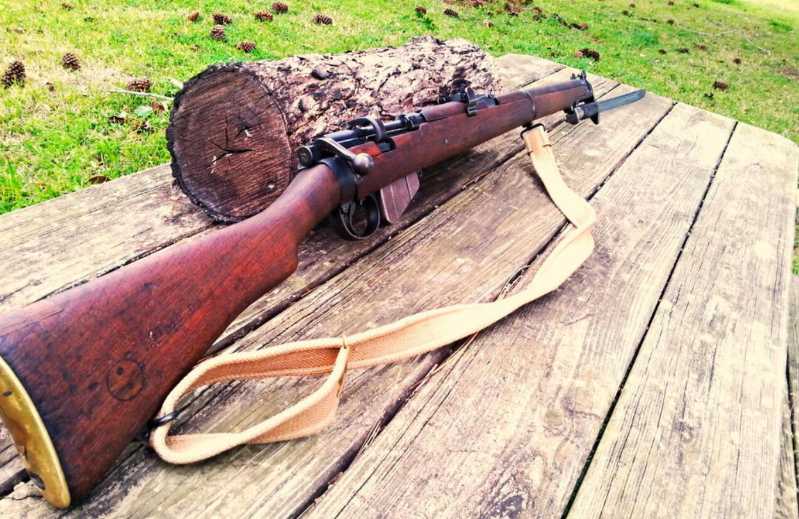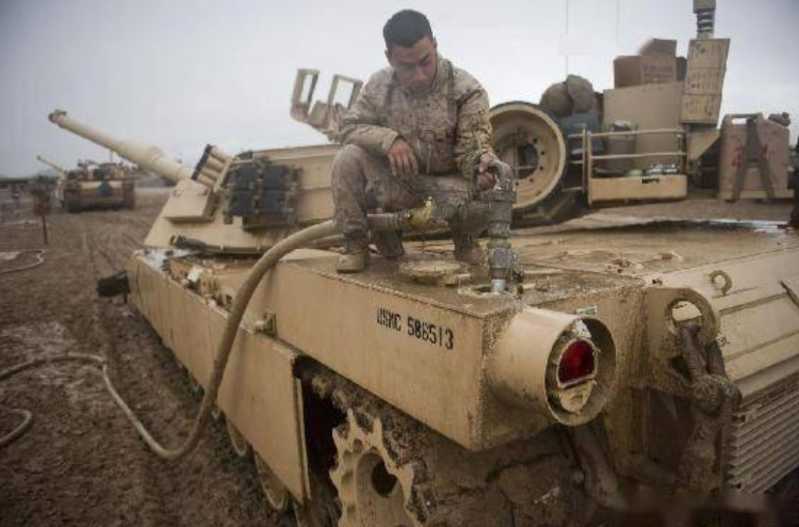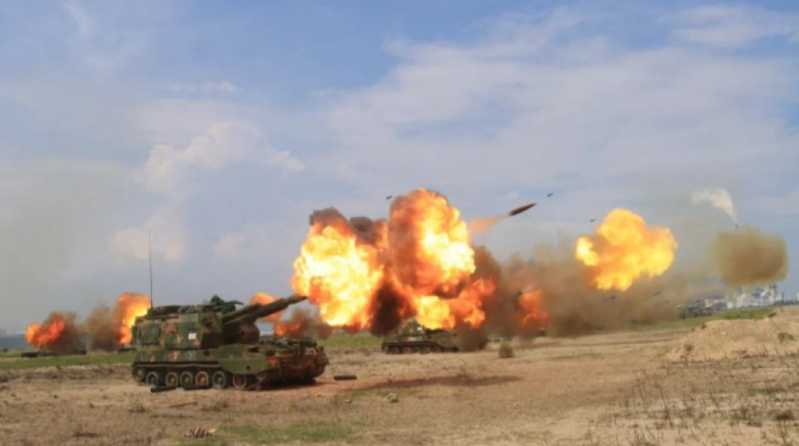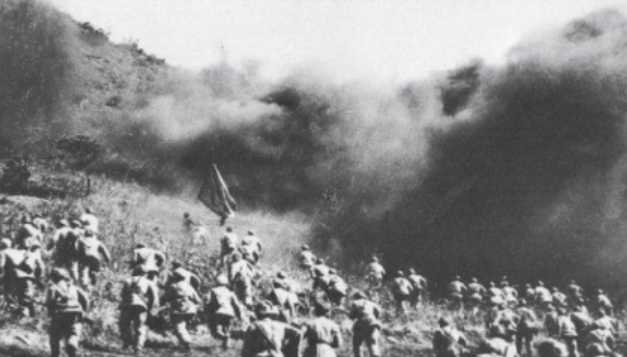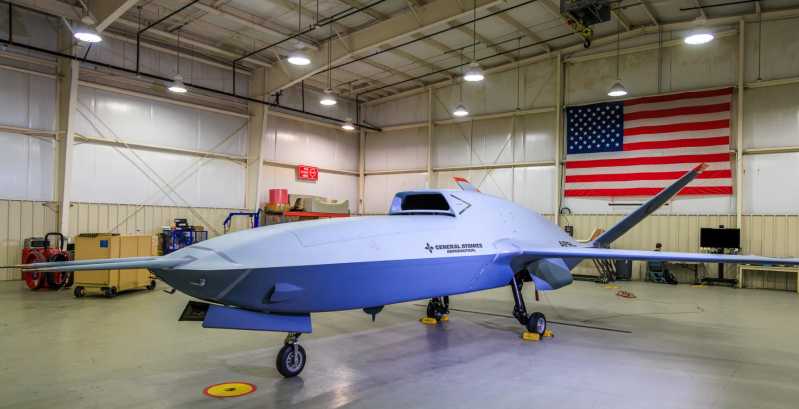I have always believed that the most toy-like firearm is the bolt-action rifle. Whenever I am in a bad mood, I just need to pull the bolt twice, and my mood will miraculously improve. The "turn and pull" action seems to have a magical healing power. If there is anything more fun than the bolt, it must be the straight-pull bolt.
The official name of the straight-pull bolt is the straight-pull bolt-action rifle, which is a half-brother of the rotating bolt-action rifle and together forms the bolt-action rifle family. However, the bolt-action rifle is like a very biased parent, and the treatment between the two children is very different-the rotating bolt-action rifle is "big and powerful" and very common, while the straight-pull bolt-action rifle has little presence.
In theory, the straight-pull bolt-action rifle has certain advantages. As we all know, when a shooter operates a rotating bolt-action rifle, there are two actions, "one turn and one pull", while a straight-pull bolt-action rifle only has the action of "pulling", which is simpler to operate and has the theoretical advantage of high rate of fire. For this reason, many countries, such as the Austro-Hungarian Empire, Canada, and Switzerland, have been equipped with straight-pull bolt-action rifles.
However, it has been proved that the advantages of straight-pull bolt-action rifles are only superficial advantages. From the large-scale service of bolt-action rifles to their retreat to the second line, the "little brother" of the straight-pull bolt-action rifle has never been able to "make a name for itself". Among the newly developed bolt-action rifles today, rotating bolt-action rifles are still very common, and straight-pull bolt-action rifles are still playing a supporting role. Although they are not "making a name", all the few straight-pull bolt-action rifles are worth talking about. All bolt-action rifles are "guns with stories"
K31
When it comes to straight-pull bolt-action rifles, many people will think of the Swiss K31. This is not surprising. Today, the K31 has become synonymous with straight-pull bolt-action rifles. As a rifle born in 1931, the K31 has exquisite processing that is incompatible with the times, and its precision is also outstanding. As for the appearance, whether it is the huge T-shaped bolt handle or the distinctive pull ring safety, this gun has many "Internet celebrity" features.
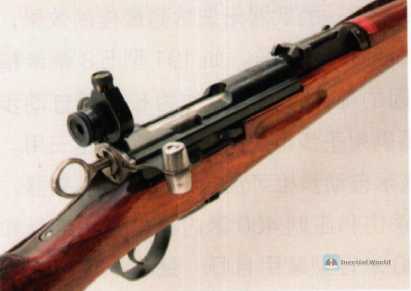
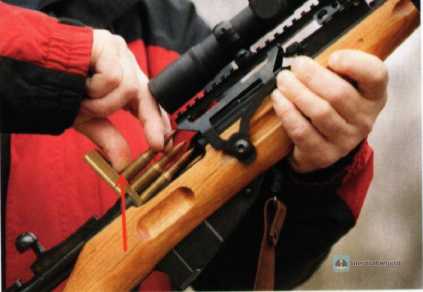
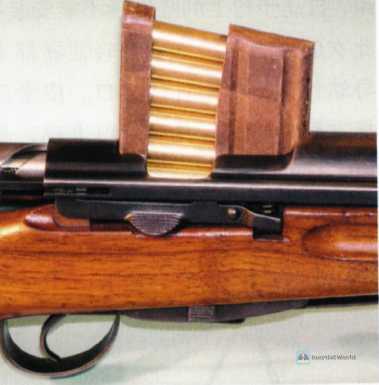

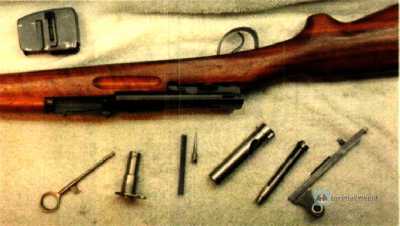
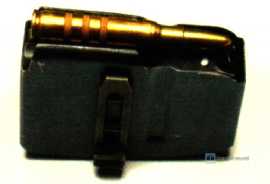
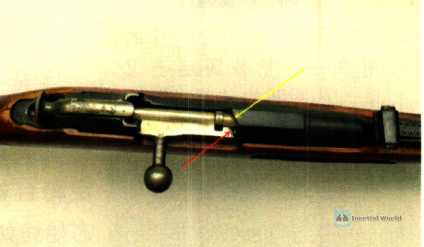
The fate of a firearm depends on its "mother" to a certain extent. We all know that Switzerland is a neutral country. War is the best stage for firearms. K31, which cannot perform on stage, naturally lost an opportunity to prove itself. In other words, from service to retirement, K31 has never been on the battlefield and has always been a "cloud warrior", but this has not affected the popularity of K31 at all. Today’s K31 has vaguely sat firmly on the throne of "the best bolt-action rifle in World War I".
There has always been a very bad tradition in the domestic gun fan circle-creating gods. There are always some military fans who like to infinitely elevate a firearm, desperately praise its advantages, and turn a blind eye to its shortcomings.
However, there is no perfect firearm in this world. Even a good gun has more advantages and fewer disadvantages. The more you label a gun, the more you hold it up as a god, the worse it will fall in the future. For example, the M240, M2, Mauser 98, these guns have all experienced the painful process of going from the altar to the quagmire.
Among many guns, K31 seems to be the only gun that has firmly sat on the throne. However, can this rifle bear the heavy crown? Today we will try to "overthrow" the throne of K31.
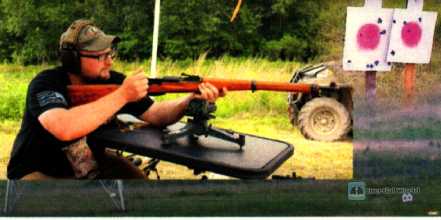
Overthrow the throne of K31
So far, we have three impressions of K31: one is exquisite processing, the second is excellent accuracy, and the third is smooth operation. The first one is the easiest to verify. When we disassemble the gun and reveal the internal corners,. Obviously, the processing quality of WWII firearms will be "exposed", and the processing of K31 is indeed very good.
As for the accuracy of K31, the Swiss have done a detailed and professional evaluation. The Swiss statistical method is quite unique. They fixed K31 on the stand and fired a group of bullets to obtain the bullet impact point dispersion, and then selected the 50% bullets closest to the dispersion center in the horizontal and vertical directions, and calculated the dispersion width and dispersion height of these 50% bullets. In fact, the Swiss statistical method is the 50% dispersion density boundary, but our country counts 70% instead of 50%.
At 100 meters, the 50% dispersion density boundary of the fixed stand of K31 is 1 cm (horizontal) x 2 cm (vertical). According to the general rule, the 100% dispersion density boundary of K31 should be 2~3 cm (horizontal) x 4~6 cm (vertical). In other words, at a distance of 100 meters, K31 can shoot all bullets into a rectangle of 2~3 cm x 4~6 cm. This accuracy is very high and is close to the threshold of modern sniper rifles.
However, it is interesting that the Swiss also counted the actual shooting accuracy of excellent shooters. Using the same firearms and the same bullets, at 100 meters, the 50% dispersion density of the shooter’s actual shooting results is 5 cm (horizontal) x 4 cm (vertical). Such results are quite average, and even in World War II, they were not very good.
The gap between the fixed-bench accuracy and the actual shooting accuracy of K31 is so large, which is really incredible. Generally speaking, the accuracy of excellent shooters, even if not as good as the fixed-bench accuracy, is quite close, at least not like K31 Based on my personal experience, I have speculated on three possibilities. The first is that the excellent Swiss shooters are not that good, and there is a certain amount of water, which is easy to understand. The second is that the Swiss tested a large number of projectiles. The third is The trigger of K31 is terrible.
We all know that accurate shooting is never as simple as pulling the trigger, but a very tiring thing. Shooters are not supermen. If they need to fire a lot of bullets continuously, it is difficult to maintain an efficient and stable shooting state. Therefore, as the number of bullets increases, the accuracy of the shooter’s shooting will become worse and worse. The fixed target table is a machine, and its state is always the same.
As for the trigger feel, it will not affect the accuracy of the target table, but it will greatly affect the shooter’s actual shooting accuracy. This is also easy to understand. After all, there is no concept of "feel" for machines, and people will definitely rely heavily on the feel. The accuracy of many firearms is often ruined by an extremely bad trigger. But so far, we have not heard any complaints about the trigger feel of K31.
Based on my personal experience, I think that if the number of bullets is large, it is very likely that K31 The core reason why the accuracy of the fixed target and the actual shooting accuracy of the shooter are so different. The accuracy of the fixed target of K31 is very good, which is enough to prove the accuracy of K31 itself. The actual shooting accuracy of the shooter is relatively general, but also qualified. In terms of the impression of excellent accuracy, K31 has withstood the test.
As for the smooth operation, we have to start with the ancestral bug of the straight-pull bolt-action rifle. We all know that there is a pre-extraction mechanism in the rotating bolt-action rifle. The bolt handle has a lever function that can pull the shell out a certain distance in advance to greatly reduce the resistance to unlocking. It is difficult to design a pre-extraction mechanism for the straight-pull bolt action, and there is an ancestral bug that makes it difficult to open the bolt. The shooter can only use great force to perform miracles "human extraction". When opening the bolt, pull the bolt handle violently, so as to achieve the effect of "human extraction". The feel of K31’s bolt opening is a bit difficult to describe. I have watched many K31 live shooting videos and asked friends who own K31. The consensus is that it is not difficult to pull, it requires skills, but it is not smooth at all. After all, no matter how good the "human extraction" is, it is still "human extraction"! It is not comparable to the pre-extraction mechanism, it can only improve the feel, but it is impossible to make a fundamental change. Moreover, as long as we take a closer look at K31, we can understand that if the bolt opening is really so smooth, why would the Swiss design such a huge and easy-to-pull bolt handle?
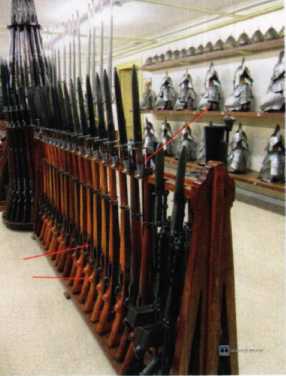
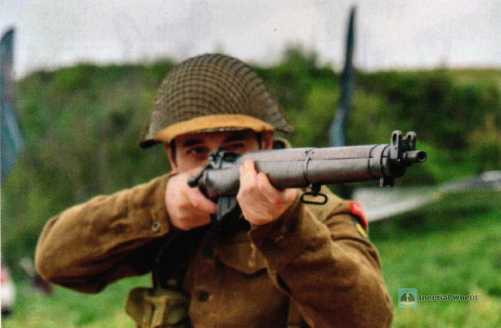

Under similar processing levels, the feel of K31 is definitely not as good as that of a rotating bolt-action rifle with a pre-extraction mechanism. During World War II, the processing quality of bolt-action rifles was mostly not very good, and K31 has first-class processing. Under the premise of the existence of ancestral bugs, it still guarantees a certain bolt opening feel, which is already very rare. In terms of smooth operation, K31 does not live up to its reputation, but it is considered qualified.
The crazy understanding of K31 in China
K31 is a very famous straight-pull bolt-action rifle, but some people in China only know about it. A friend of mine had a very strange idea. He thought that we should copy K31 and export it, and we would definitely make a lot of money from foreigners. However, in my opinion, this idea couldn’t be worse.
K31 is very exquisitely processed, and the production cost is not low. The selling price at that time was definitely not cheap. However, K31 is also an old gun from World War II. Nowadays, K31 in the foreign market is essentially "second-hand cars". Although it is becoming less and less common, the price is not high, leaving us with even less profit margin. If our copycat K31 also takes the high-end route like the original, then the price will rise, resulting in the embarrassing situation that the price of copycat goods is close to or even exceeds the genuine second-hand goods.
If we produce some cheap but inferior copycats, we will also encounter big troubles. Don’t forget that the bolt-action rifle has no pre-extraction mechanism, so the handling is not very good. If the processing is not up to par, the handling of the gun will be a mess, and it is likely to become industrial waste. What’s more, the price of the genuine second-hand K31 is not expensive, and the appearance is quite good. Will anyone really buy industrial waste for a little price difference?
So, when I knew my friend’s idea, I immediately had a friendly and intense exchange with him. Later, I realized that my friend only knew K31 and thought that there was only this one bolt-action rifle in the world. So, he had the strange idea of copying K31.
Mannlicher M1895
Compared to K31, Mannlicher M1895 seems to be unknown. In fact, it is also a serious old European aristocratic firearm. M1895 originated from the Austro-Hungarian Empire. This is a country that has now disappeared and only exists in junior high school history exams, but it was considered famous at the time. The so-called Mannlicher can be understood as the famous Austrian Steyr Company today.

Although it comes from a famous family, the popularity of M1895 is not high. I personally don’t like it either. This is not because there are any bugs in its design, but it is too ugly! I found that in the aesthetics of bolt-action rifle design at that time, the aesthetics of Russians and Germans were still reliable, and Mosin-Nagant and Mauser 98 looked more pleasing to the eye. The aesthetics of Austro-Hungarians and Italians are simply hard to describe, and Mannlicher M1895 and Carr-Canot don’t look very good.
In short, M1895 is just a passerby gun for me. However, by chance, I became very interested in this gun. We all know that the bolt-action rifle has an inherited bug that is difficult to open. The K31 mentioned above gave up treatment and did not solve this problem at all. It relied entirely on exquisite processing + the shooter’s great strength to deal with the job. However, I once saw a video in which the shooter was holding an M1895 rifle and shooting quickly. The action was smooth and there was no sense of stagnation in the bolt opening. After watching this video, I was shocked and thought that the M1895 must have a very magical design that completely solved the inherited bug of the bolt opening, so the shooter’s operation could be so smooth. After taking a look at the M1895’s bolt handle, I was more determined to make this judgment: You see, the M1895’s bolt handle is so small, so it must have solved the bug of the bolt opening! If it is difficult to open the bolt, unless the designer is crazy, he will definitely not design such a small bolt handle!
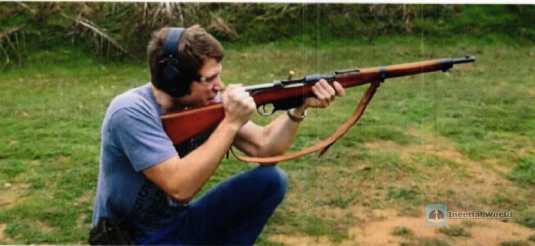
In response to the BUG of the difficulty in opening the bolt of a straight-pull bolt-action rifle, I conceived a new structure and applied for a patent. But I am not satisfied with my patent. In principle, my idea can only alleviate this problem to a certain extent, and the smoothness of the gun operation is still not as good as that of a rotating bolt-action rifle with the same processing level. Therefore, when I saw the smooth shooting video of the M1895, I immediately made up my mind to study the M1895 and see how European designers solved this BUG a hundred years ago.
However, the M1895 is a very old gun, and I can’t find any valuable information at all. After a long and fruitless search, I was ready to give up the treatment in the spirit of the old saying "Nothing is difficult in the world as long as you are willing to give up". However, at this time, I accidentally clicked on a video that completely subverted my three views.
Nowadays, the female host of the American C&R channel is very famous. We don’t know her name, but we know that she always smiles with satisfaction after shooting a gun (in fact, many people do this, such as me). Therefore, this female host is also called "Smiling Sister" by gun fans.

I don’t like watching "Smiling Sister"’s videos. She shoots a lot of guns but her shooting level is still very average. She relies on her appearance rather than her skills. On the day I gave up treatment, I accidentally clicked on the video of "Smiling Sister" shooting M1895, and saw a scene that impressed me to this day: "Smiling Sister" was so immature when shooting M1895! You can clearly see that the resistance to the action of opening the bolt is very large, and there is no silky smoothness at all.
Oh, it turns out that the shooter I saw at the beginning, the reason why he was able to shoot M1895 smoothly was completely due to his great strength! It turns out that the Austro-Hungarians who I thought had wonderful ideas and solved the ancestral bug of the straight-pull bolt-action rifle actually did nothing! It turns out that the M1895’s bolt handle is so small, it’s really that the designer was confused! M1895, I feel like I will never love it again.
But, don’t think that M1895 Magic, because the next two modern straight-pull bolt-action rifles will only make you feel more magical.
R93
R93 is a straight-pull bolt-action rifle developed by the German Blaser company. This rifle has excellent accuracy, first-class workmanship, beautiful appearance, super popularity, high price, and noble "gun" style. However, such a high-end rifle exploded.
Everything starts with the special locking mechanism of R93. I personally think R93 The locking mechanism of the R93 is called the rib-opening type. When the gun is locked, the entire circle of "ribs" of the R93 will be opened, and the "ribs" at the front of the "ribs" will be stuck in the joint sleeve to play a locking role. When the shooter pulls the bolt back, the "ribs" will be retracted. The locking mechanism of the R93 is very unique and very innovative. Many people regard this mechanism as the "German conscience" and think it is a bold, unique and excellent masterpiece.
However, when I saw this mechanism, I was full of question marks: ribs are very fragile mechanisms. When opening and closing, the "bones" of the ribs have to be bent repeatedly, and their lifespan is definitely not high. The single strength of the locking "ribs" with a number of up to 14 is too low, and the number is too large, it is difficult to ensure the consistency of locking, and the overall strength is also problematic. Such a locking mechanism is indeed interesting, but is it really reliable?
Sure enough, I continued to search for R93 When I was searching for information, I found a lot of negative news. For example, the bolt was not locked properly, the "bone" fell off, the gun exploded, etc. What’s more, you can find the "victim" of the R93 explosion accident on the Internet. The right face of this poor man was completely blown up by the R93 and turned blue. Due to the swelling of the face, the right eyeball and eye socket were tilted to one side, which looked very creepy.
What puzzles me most is why the R93 has an original locking mechanism? Once the locking mechanism has a problem, the shooter is often dead or disabled. Therefore, the locking mechanism should be like vegetables, pursuing safety and security, and should not pursue novelty. After all, the shooter is not your guinea pig. As a high-end hunting rifle that sells for a lot of money, it is really incredible that the R93 has such a big negative news about the locking mechanism. It’s just like buying Adidas and encountering color fading, buying Nike and encountering glue opening.

Fortunately, Blaser Company stopped production of R93 in time and launched the improved R8 rifle. After I carefully studied R8, I found that its locking mechanism still uses R93, and it is very likely that the problem of R93 was solved by "stacking materials". But "stacking materials" cannot solve the fundamental design defects. If R8 is to fire higher chamber pressure, more powerful bullets, and to perform higher intensity shooting, the locking mechanism may still be unable to cope with the task. Fortunately, R8 does not have such usage requirements. After all, it is essentially a hunting rifle, not a military rifle.
MARAL
Among many straight-pull bolt-action rifles, MARAL is the most special one. It actually has a recoil spring! After the shooter pulls the bolt back into place, he only needs to release the bolt, and the bolt will recoil, push the bullet, and lock under the action of the recoil spring, and the rate of fire of the gun will be faster. When I saw this gun, I was very happy, because I had the same idea before, trying to add a recoil spring to the straight-pull bolt-action rifle!
Then after thinking about it carefully, I found that adding a recoil spring to a straight-pull bolt-action rifle is a "sinkhole" design. First of all, the recoil spring must occupy a certain weight and volume, which directly leads to the increase and weight of the receiver and the whole gun. In order to be able to push the bullet into the chamber forcefully, the mass of the automatic machine and the pre-pressure of the recoil spring cannot be too small. The weight of the automatic machine increases, the volume and weight of the receiver must increase, and the mass of the whole gun will also increase; when the shooter pulls the bolt back, he must manually overcome the spring force of the recoil spring, and the resistance will also increase. In short, the design of adding a recoil spring to a bolt-action rifle is full of pitfalls!
To a certain extent, a bolt-action rifle with a recoil spring is essentially a semi-automatic rifle with a disabled automatic function and can only be fired manually. The shortcomings of a semi-automatic rifle, such as larger size, more complex structure, and heavier weight, are all present in the bolt-action rifle with a recoil spring. It is really not worth it to pay such a high price for a slightly faster rate of fire!
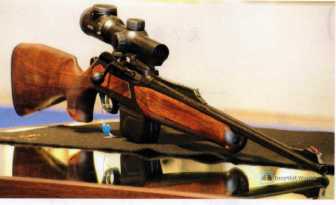

I don’t understand the thoughts of rich people
Many years ago, I watched a promotional video for a straight-pull bolt-action rifle. I can’t remember which gun it was, but I clearly remember that it was a straight-pull bolt-action rifle. In the video, a well-dressed shooter hunted a deer. The shooter’s shooting skills were very accurate, and the accuracy of the gun was also good. The bullet accurately hit the heart of the deer. The video was normal up to this point, but the next scene was very scary.
The shooter walked to the dead deer, dropped the gun and took out the dagger, cut open the deer’s belly, took out the deer’s heart, and held it in his hand and explained desperately. At this time, the camera also gave a close-up in time. The shooter’s hands were covered with blood, and he seemed to be holding the shot, still steaming heart in his hands, with an excited look on his face, as if he was holding a "trophy". The shooter’s clothes are so exquisite, and the processing of the gun is so exquisite, which forms a sharp contrast with the bloody hands. I have only watched this video once, and I still can’t let it go.
Abroad, whether it is R93 or MARAL, their bare guns are very expensive. The American revolving bolt-action rifle is well designed and has a huge market. After years of price wars, the price of revolving bolt-action rifles has been quite low. In terms of performance, straight-pull bolt-action rifles are not better or more accurate than revolving bolt-action rifles. The so-called high rate of fire advantage exists more on paper and cannot support its expensive price at all.
In my personal opinion, straight-pull bolt-action rifles are essentially aristocratic toys. Rich people always like to do something different to show their aesthetics and status. The niche and unique straight-pull bolt-action rifles just cater to the psychology of the rich. However, the video of hunting deer with two hands taking the heart is still fresh in my memory. Maybe I really don’t understand the world of the rich.
My thoughts on bolt-action rifles
I personally have the idea of designing a bolt-action rifle, but I don’t want to sell it abroad to make money from rich people (of course, this is also possible), but to use bolt-action rifles to replace semi-automatic sniper rifles.
From current experience, the structure of bolt-action rifles is indeed simple and the weight is indeed small. The structure of semi-automatic rifles is more complicated, and the size and weight must be much larger than bolt-action rifles.
Nowadays, sniper rifles often have a very thick and long barrel. The weight of the barrel is very large and cannot be easily reduced. Otherwise, the heat capacity of the barrel is low, and it is easy to have problems such as heat dissipation. The thick and long barrel is also a heavy burden. Even if it is a bolt-action structure, the weight of the gun is considerable, and the weight of a semi-automatic sniper rifle is even greater. If a pencil tube is used like the SVD, it will have a very adverse effect on the accuracy of the sniper rifle.
So I personally have a bold idea: Can we design a straight-pull bolt-action rifle? The firing rate of a straight-pull bolt-action rifle is indeed not as good as that of a semi-automatic rifle, but it is also faster than a rotating rear-pull bolt-action rifle. I want to design a straight-pull bolt-action rifle with a left-hand bolt handle, and use my own patent that partially solves the problem of difficult bolt opening to reduce the resistance to opening the bolt. When shooting, the shooter can pull the bolt handle with his left hand, and the right hand does not need to leave the trigger to increase the firing rate as much as possible. What’s more, sniper rifles do not have too high requirements for firing rate.
I have always felt that between semi-automatic and bolt-action sniper rifles, bolt-action rifles may have their own place. Of course, the above idea is just my personal imagination and has not been verified. If this plan is not reasonable, we can still sell guns abroad to make money from the rich. Anyway, I feel that their aesthetics are unique and the money should be easy to make.


